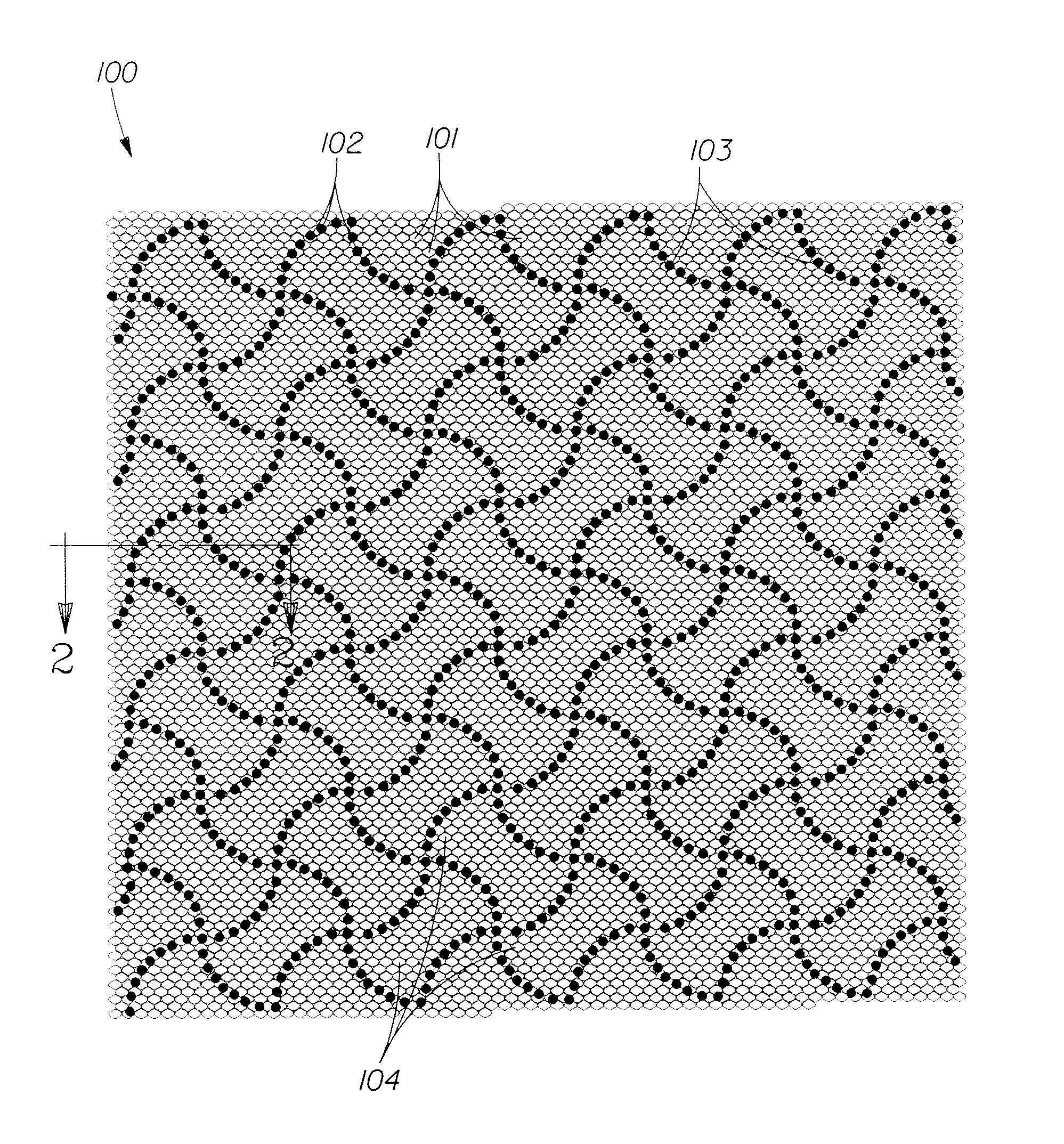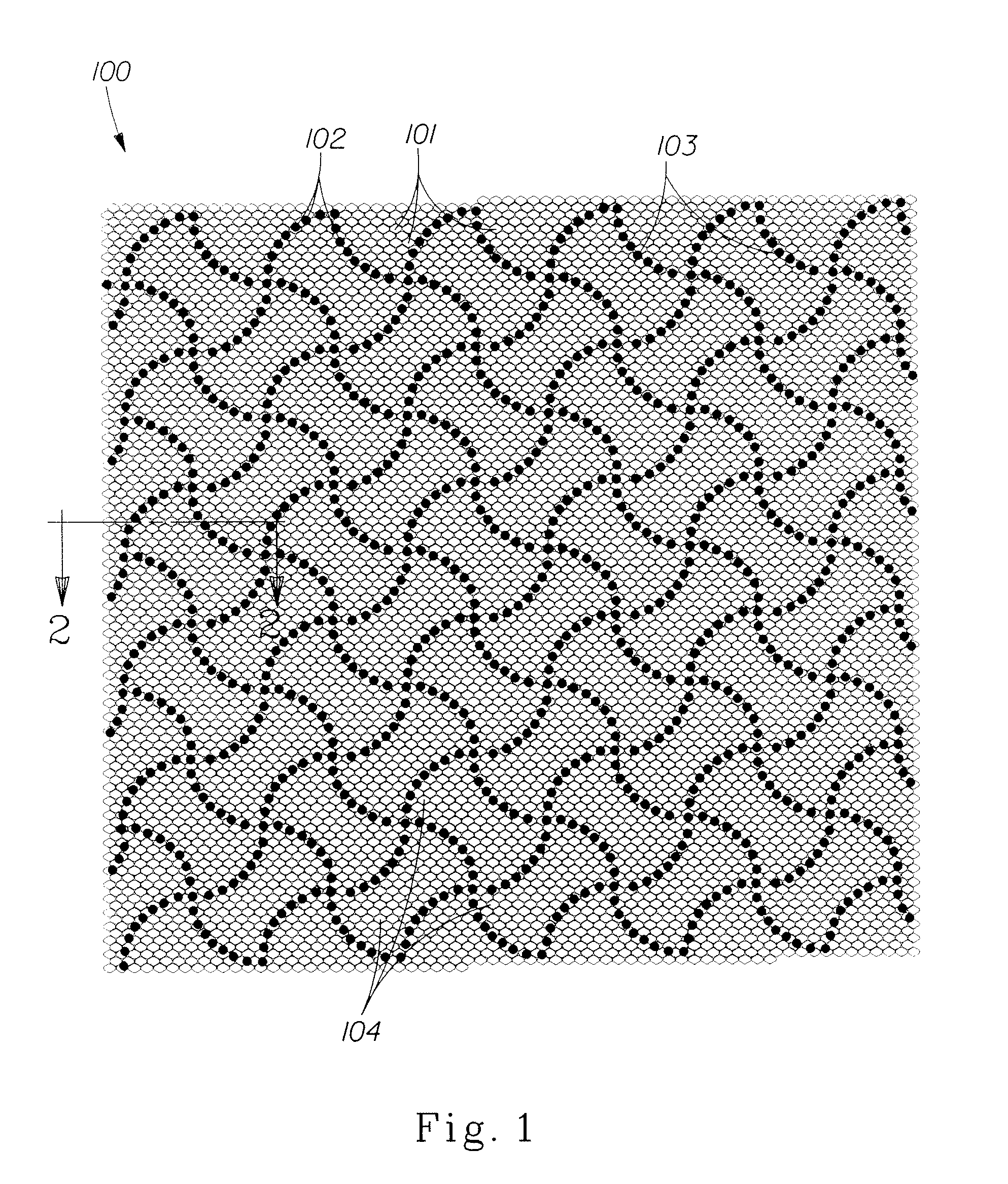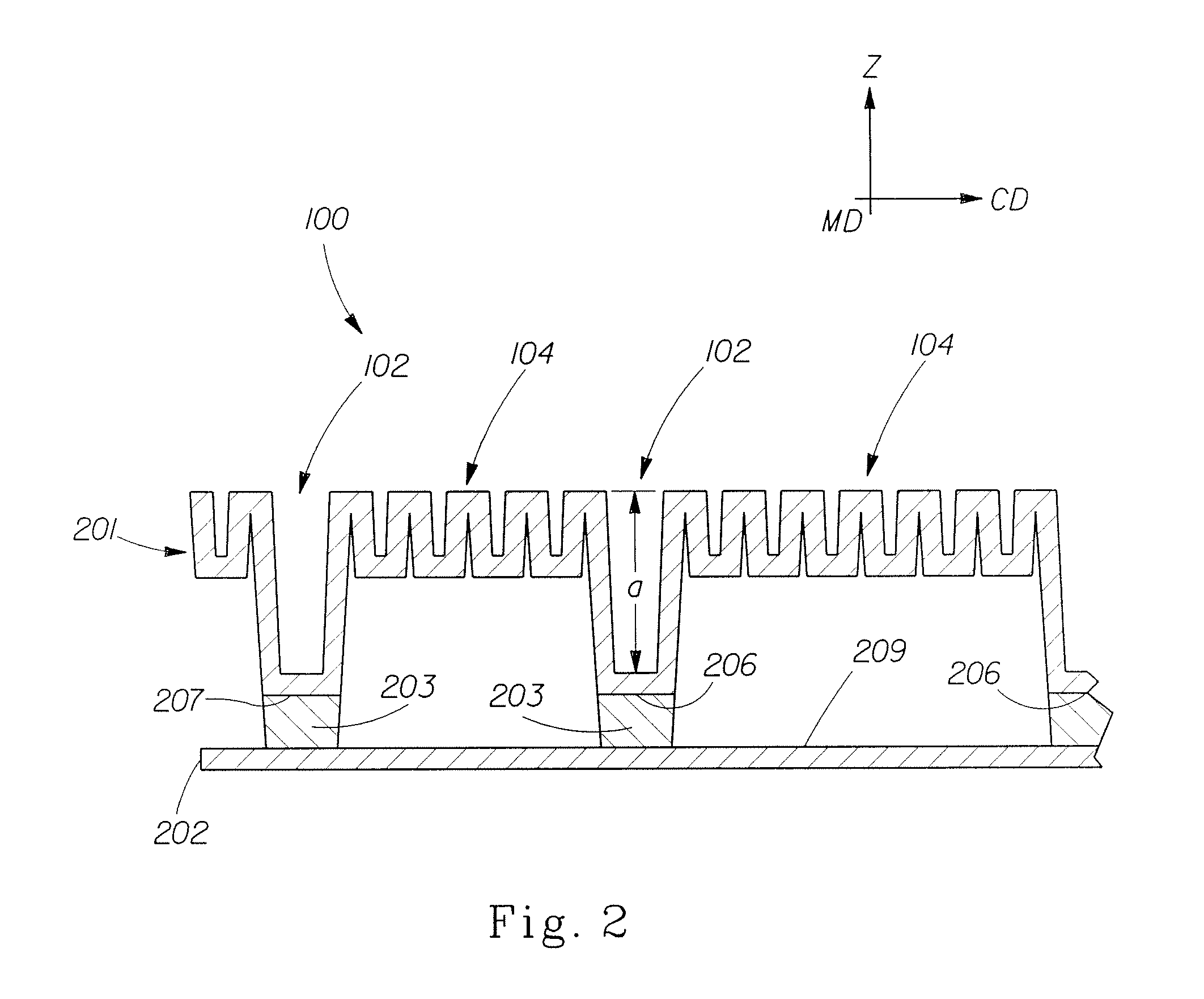Fibrous structure product with high softness
a technology of fibrous structure and softness, applied in the field of fibrous structure products, can solve the problems of reducing the absorbency, strength and/or bulk of the product, compromising the quality of another attribute, and sacrificing the strength, bulk and/or absorbency of the produ
- Summary
- Abstract
- Description
- Claims
- Application Information
AI Technical Summary
Benefits of technology
Problems solved by technology
Method used
Image
Examples
example 1
[0080]One fibrous structure useful in achieving the fibrous structure paper products of the present invention is a through-air-dried (TAD), differential density structure formed by the following process. (Examples of TAD structures are generally described in U.S. Pat. No. 4,528,239.)
[0081]A Fourdrinier, through-air-dried papermaking machine is used. A slurry of papermaking fibers is pumped to the headbox at a consistency of about 0.15%. The slurry consists of about 70% Northern Softwood Kraft fibers, about 30% unrefined Eucalyptus fibers, a cationic polyamine-epichlorohydrin wet burst strength resin at a concentration of about 25 lbs per ton of dry fiber, and carboxymethyl cellulose at a concentration of about 5 lbs per ton of dry fiber, as well as DTDMAMS at a concentration of about 6 lbs per ton of dry fiber.
[0082]Dewatering occurs through the Fourdrinier wire and is assisted by vacuum boxes. The embryonic wet web is transferred from the Fourdrinier wire at a fiber consistency of ...
example 2
[0087]One fibrous structure useful in achieving the fibrous structure paper products of the present invention is a through-air-dried (TAD), differential density structure formed by the following process. (Examples of TAD structures are generally described in U.S. Pat. No. 4,528,239.)
[0088]A Fourdrinier, through-air-dried papermaking machine is used. A slurry of papermaking fibers is pumped to the headbox at a consistency of about 0.15%. The slurry consists of about 70% Northern Softwood Kraft fibers, about 20% unrefined Eucalyptus fibers, and about 10% of bicomponent fibers of copolymers of polyester (polyethylene terephthalate) / polyester (polyethylene terephthalate) such as “CoPET / PET” fibers, which are commercially available from Fiber Innovation Technology, Inc., Johnson City, Tenn. The slurry further comprises a cationic polyamine-epichlorohydrin wet burst strength resin at a concentration of about 25 lbs per ton of dry fiber, and carboxymethyl cellulose at a concentration of ab...
PUM
| Property | Measurement | Unit |
|---|---|---|
| basis weight | aaaaa | aaaaa |
| basis weight | aaaaa | aaaaa |
| basis weight | aaaaa | aaaaa |
Abstract
Description
Claims
Application Information
 Login to View More
Login to View More - R&D
- Intellectual Property
- Life Sciences
- Materials
- Tech Scout
- Unparalleled Data Quality
- Higher Quality Content
- 60% Fewer Hallucinations
Browse by: Latest US Patents, China's latest patents, Technical Efficacy Thesaurus, Application Domain, Technology Topic, Popular Technical Reports.
© 2025 PatSnap. All rights reserved.Legal|Privacy policy|Modern Slavery Act Transparency Statement|Sitemap|About US| Contact US: help@patsnap.com



